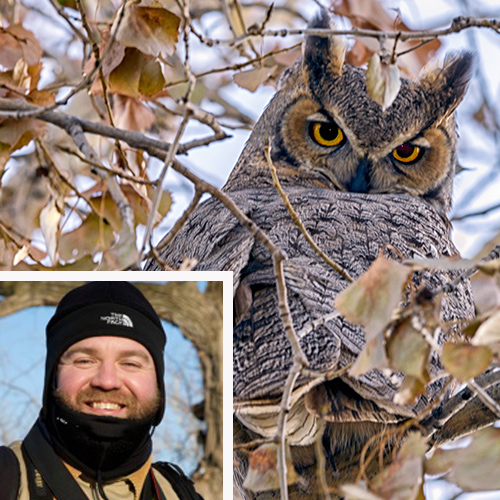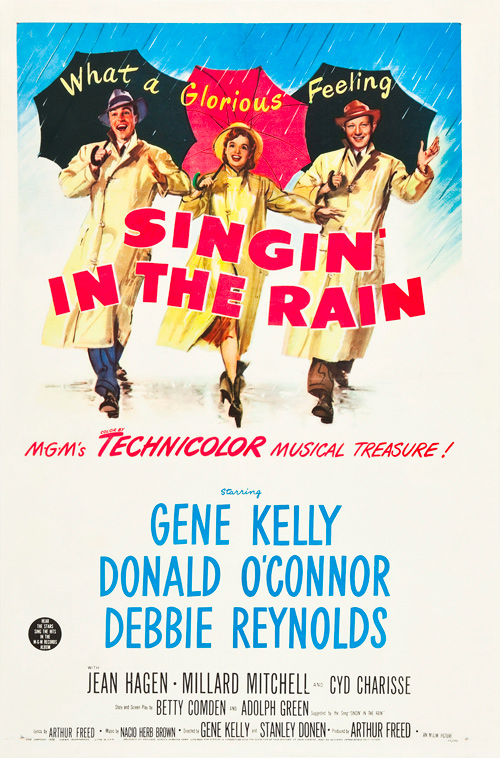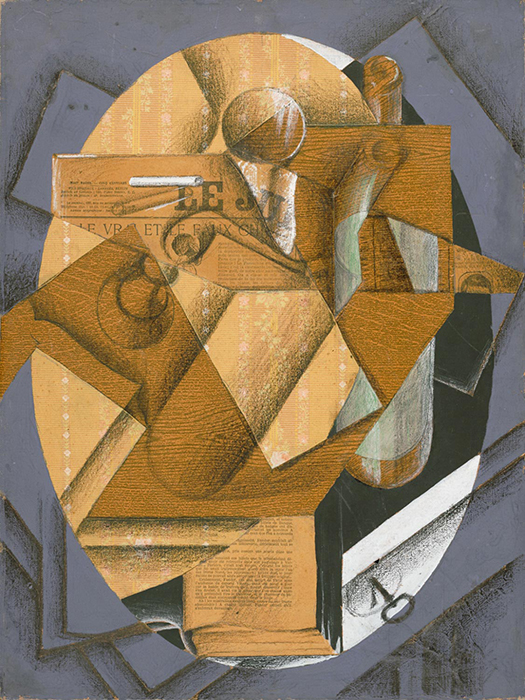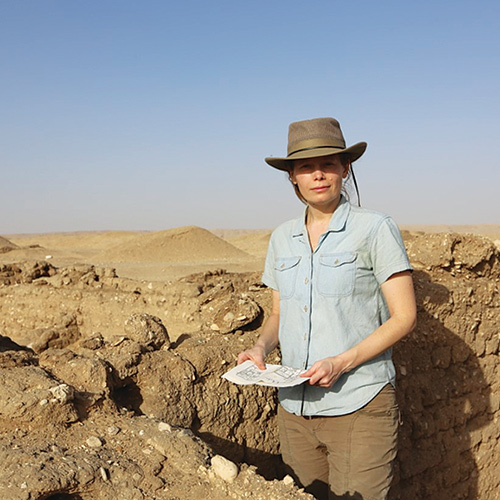This week's edition takes its cue from Juan Gris, the first artist to exhibit a collage work. It's a colorful assemblage of subjects including a rare owl, archetypal movie heroes, stories told by the landscape of national parks, and archeological discoveries that bring the past to life.
They're among the offerings designed to make sure you continue to enjoy what you,ve come to value from Smithsonian Associates: programs and experiences that are entertaining, informative, eclectic, and insightful.
A Visitor on the Wing
 Great horned owl; Mark H.X. Glenshaw
Great horned owl; Mark H.X. Glenshaw
The latest elusive celebrity to draw thrilled crowds in New York City has nothing to do with the premiere of a hot new film or an album drop. The January 27 sighting of a rare snowy owl in Central Park-the first since 1890-had ornithology groupies reaching for their cameras. "Seeing the snowy owl is like winning the lottery, especially if you're new to birding and you'd never seen a snowy owl. It definitely felt like winning the lottery yesterday in Central Park," an Audubon Society staff member told a local news program. Smithsonian magazine reported on the once-in-a-lifetime winged visitor. Naturalist Mark H.X. Glenshaw offers an introduction to a more frequently seen species, the great horned owl, in a three-part Smithsonian Associates Streaming series that takes off on Sunday, March 21. He provides an in-depth look at this swift and silent predator found in every state except Hawaii and in almost every kind of habitat-likely including your own neighborhood.
Read the Article
Register for the Program
That's Entertainment
 Theatrical poster for the release of the 1952 musical film "Singin' in the Rain"
Theatrical poster for the release of the 1952 musical film "Singin' in the Rain"
In the pre-Netflix era, binge watching involved a jumbo tub of popcorn and the largest box of Milk Duds from the refreshment stand of your neighborhood theater. Where and how we view a movie today is radically different, but the legacy of classic Hollywood filmmaking still influences the stories we see-and continue to love. Several upcoming Smithsonian Associates Streaming programs offer a lens into the world of film.
The visual mythmaking and popular appeal of the movies have both reflected and shaped our national character. On Tuesday, February 23, Washington City Paper film critic Noah Gittell considers three archetypes that emerged at key points in American film history: the Cowboy, the Rogue Cop, and the Orphan Protector. Get some insights into an Academy Awards season unlike any other when Gittel returns on Wednesday, April 21 for his annual evening that focuses on all things Oscar, from awards history and trivia to discussions of this unusual year's nominations and behind-the-scenes stories.
In a Wednesday, March 3 program, filmmaker and writer Sara Lukinson celebrates producer Arthur Freed, whose eponymous unit at MGM was responsible for creating the most glorious string of musicals in film history during the 1940s and '50s, including gems like On the Town, Singin' in the Rain, An American in Paris, and The Band Wagon. She's back on Sunday, March 7 with a look at four recipients of the Kennedy Center Honors-Gregory Peck, Kirk Douglas, Robert DeNiro, and Tom Hanks-that reveals how each actor perfectly embodied the distinctive larger-than-life characteristics of the American hero of their time.
Archetypes of American Film
2021 Oscars: A Year of Drama
Favorite Movies and Their Times
Artists from the Kennedy Center Honors
Putting it Together
 Still Life: The Table, Juan Gris, 1914; Philadelphia Museum of Art, A. E. Gallatin Collection, 1952
Still Life: The Table, Juan Gris, 1914; Philadelphia Museum of Art, A. E. Gallatin Collection, 1952
The art of collage emerged in 1912 as the invention of either Georges Braque or Pablo Picasso, but fellow Cubist Juan Gris was the first artist to exhibit a collage. The New York Times provides a fascinating close-up look and analysis of the elements of his 1914 work Still Life: The Table, created from newsprint, wallpaper, and other paper stocks. Collage can serve as a way for artists to understand design and composition in abstract art that uses various mixed media materials. In a Smithsonian Associates Streaming studio art course that begins Monday, March 1, artist Sharon Robinson leads an exploration of a variety of strategies to construct successful abstract pieces using collage techniques.
Read the Article
Register for the Program
National Parks: Stories Told and Untold
 Grand Canyon National Park
Grand Canyon National Park
The spectacular landscapes seen by today's visitors to the Colorado Plateau were shaped across time. In a Sunday, February 21 Smithsonian Associates Streaming program, join geologist Kirt Kempter on a exploration of three iconic national parks whose geology reveals fascinating aspects of that evolution. Begin at the Grand Canyon, where a mile-thick package of sedimentary rocks from the Paleozoic Era are strikingly exposed from the canyon's rim to bottom. Each layer has a story to tell, revealing ancient oceans, rivers, and sand dunes that reflect drastically changing environments through geologic time. From there, head north to Zion and Bryce National Parks, traveling through progressively younger strata that are referred to as the Grand Staircase, a geologic stepladder of colored cliffs with intervening vegetated plateaus.
Not all histories of the lands that became national parks have been fully examined or chronicled. Though Yellowstone National Park is sometimes described as reflecting a wilderness untouched by humans, Native Americans were hunting and gathering there for at least 11,000 years according to anthropologist Doug MacDonald, author of the recent Before Yellowstone: Native American Archaeology in the National Park. In an interview with Smithsonian magazine, MacDonald discussed how his 14 years of excavations at Yellowstone have produced remarkable evidence of the Native American presence, and why their story of human occupation had been deliberately erased.
Read the Article
Register for the Program
Hidden Treasure
 Jacquelyn Williamson on site at Tell el-Amarna
Jacquelyn Williamson on site at Tell el-Amarna
Isolated in the desert of Egypt, the ancient city of Tell el-Amarna is one of the most exciting archaeological sites in the world. The "heretic" Pharaoh Akhenaten created the city to serve as the center of the cult of worship of a single deity, a sun god called the Aten. Its extraordinary level of preservation makes Tell el-Amarna the most revealing city from ancient Egypt, providing an unmatched window into daily life and religious practices. In a full-day Smithsonian Associates Streaming program on Saturday, April 10, Egyptologist Jacquelyn Williamson, a senior member of the Tell el-Amarna archaeological team, examines the latest discoveries at the site and reveals truths about life in this remarkable city.
In Indonesia, a discovery of a different kind sheds light in what's the oldest known animal cave painting. A life-sized depiction of a pig found in in a remote valley on the island of Sulawesi is believed to date back 45,500 years. There's an intriguing detail to the painting made in dark red ochre pigment: a pair of handprints above the animal's back, which were likely made after pigment was spit onto the palms. Researchers are hoping DNA from residual saliva can offer clues about the island's prehistoric inhabitants. Learn more in a BBC News report.
Read the Article
Register for the Program